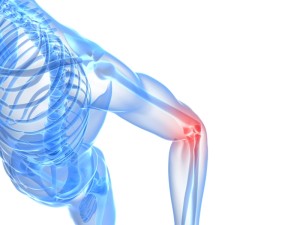Elbow Injury: Introduction
As athletes know, joint pain is common when you repeat a particular motion. Whether the action is swinging a baseball bat, frequent heavy lifting or a traumatic injury, elbow pain may result if your muscles, tendons and joints are overused, strained or impacted. If you find that elbow pain is interfering with your life, it may be time to seek an elbow pain treatment from an elbow surgeon at AOSMI.
Your elbow is a complex joint that connects your upper arm to your lower arm. The round portion of the joint is the end of your humerus, and the part that sticks out at the bottom, back of your elbow is the olecranon or ulna bone. Ligaments on the inside and outside stabilize your elbow joint. When it comes to movement, your radius bone allows your forearm to rotate, and your biceps and triceps also help move your elbow. Equally important to your elbow’s makeup are the nerves that travel around it. We’ve all banged our “funny bone,” right? This involves the ulnar nerve, which is commonly injured because of its superficial position.
 Elbow Pain Causes
Elbow Pain Causes
Aside from hitting that pesky funny bone, the most common causes of elbow pain include:
- Trauma – Caused by direct impact or a fall
- Overuse and Repetitive Stress – Often injures the ligaments around the elbow
- Poor Throwing Mechanics – Causes increased forces on the elbow leading to injury
Diseases and Injuries
- Fractures of the elbow – Often caused by a fall or impact. The most common fractures include radial head and neck fractures, distal humerus fractures and olecranon fractures
- Sprains – Caused by excessive force on a ligament, tendon or muscle
- Dislocations – Often cause severe pain and require urgent attention. Called nursmaid’s elbow in children
- Lateral epicondylitis or “tennis elbow” – Inflammation of the tendons of the elbow
- “Golfer’s elbow” – Inflammation of the tendons on the inside of the elbow
- Olecranon Bursitis or Elbow Bursitis – The bursa in your elbow is prone to injury and when it becomes inflamed or swollen, sometimes the olecranon bursa can get infected, known as “septic” olecranon bursitis.
Evaluation
If you have a problem with your elbow, an elbow surgeon at AOSMI will complete a comprehensive history and physical examination. Often, X-rays of your elbow will be obtained to evaluate your bones and joints. Sometimes further studies such as MRI of the elbow are required to look deeper into the ligaments and other soft tissue structures of your elbow. To diagnose nerve injuries around the elbow EMG/Nerve conduction studies are often necessary as well.
Elbow Pain Treatments
 Conservative
Conservative
Elbow pain treatment depends on the type of problem.
- Casting – For traumatic injuries such as fractures
- Reduction or manipulation procedure – For dislocations such as “nursemaid’s” elbow or elbow joint dislocation
- Orthobiologics and Steroid Injections – Effective for treating tennis elbow and golfer’s elbow, can help tendons heal and promote recovery
- Bracing – Can help you return to sports or work-related activities faster
- Physical Therapy and Occupational Therapy – Specifically directed at restoration of function which is occupation specific and improving throwing mechanics in athletes
Surgical
Sometimes your elbow becomes so badly damaged that you require surgical intervention.
- Open reduction and internal fixation – Commonly used for treating fractures of the tip of the elbow or olecranon and supracondylar humerus fractures. In children, fractures of the elbow are often treated with pinning such as in supracondylar humerus fractures.
- Incision and drainage – If the bursitis is severe, and especially if it becomes infected, surgery may be required to wash out the infection.
- Arthroscopic elbow surgery – Often performed to diagnose and treat problems inside the elbow joint such as osteochondral defects, which are breaks or lesions of the cartilage and bone.







